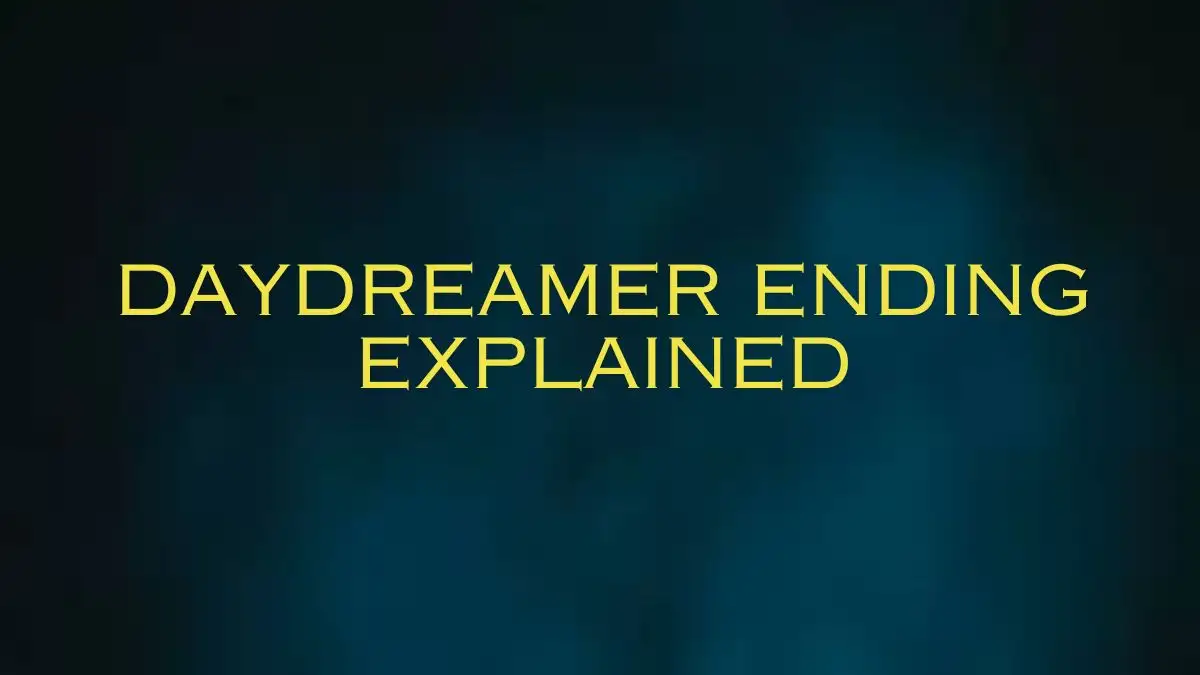Daydreamer Ending Explained, Cast, Plot and More
by Sona
Updated Feb 26, 2024

Daydreamer Ending Explained
In the end of "The Daydreamer," Hans Christian Andersen, known as Chris in the movie, finally wakes up from all his daydreams. He realizes that the adventures he went on were all in his imagination. Throughout the movie, he's been searching for something called the Garden of Paradise, but he never finds it in his dreams or in real life.
When Hans wakes up, he sees his dad, Papa Andersen, beside him. They had both faced some tough times separately but ended up together. Hans's dad had also been looking for him and got into trouble with the law. They worked hard chopping wood until they were set free. This shows that family is important and that they stick together through good times and bad.
The characters Hans encountered in his dreams, like Thumbelina, The Little Mermaid, and Father Neptune, represent different aspects of his imagination. Each character teaches him something valuable about life and helps him grow as a person. These characters and their lessons inspire Hans to become a famous writer.
The movie ends with Hans realizing that even though his adventures were just dreams, they still taught him important lessons. He decides to use these experiences to write stories and fairy tales. This is how he becomes the famous author we know today, writing classics like "The Little Mermaid" and "Thumbelina."
The ending of "The Daydreamer" shows us that sometimes, our dreams and imagination can teach us valuable lessons about life. It emphasizes the importance of family, resilience, and the power of creativity in shaping our futures.
Discover the world of entertainment like never before with Fresherslive. From captivating celebrity news to insightful film reviews, we've got it all. Subscribe today and become a part of our dynamic entertainment community.
Daydreamer Overview
"The Daydreamer" is a movie made in 1966. It's a mix of animation and real-life scenes. The story comes from tales by Hans Christian Andersen. Jules Bass directed it, and Arthur Rankin, Jr. and Romeo Muller wrote it. The movie has some catchy songs by Jules Bass and Maury Laws.
The movie has a talented cast. It includes actors like Paul O'Keefe, Jack Gilford, Ray Bolger, and Margaret Hamilton. Cyril Ritchard is the voice of the Sandman. Some of the actors also worked on another famous Christmas movie called "Rudolph the Red-Nosed Reindeer."
The voices for the characters were recorded in Toronto, Canada. Some parts of the movie were made in New York, while others were done in Tokyo, Japan. "Daydreamer" was the first big movie made by Videocraft International. It was released by a company called Embassy Pictures. Joseph E. Levine helped get the movie to theaters.
Daydreamer Cast
Paul O'Keefe
Chris (Hans Christian Andersen)
Jack Gilford
Papa Andersen
Margaret Hamilton
Mrs. Klopplebobbler
Sessue Hayakawa
The Mole
Patty Duke
Thumbelina
Boris Karloff
The Rat
Hayley Mills
The Little Mermaid
Burl Ives
Father Neptune
Tallulah Bankhead
The Sea Witch
Victor Borge
The Second Tailor
Ed Wynn
The Emperor
Ray Bolger
The Pieman
Cyril Ritchard
The Sandman
Terry-Thomas
The First Tailor
Robert Harter
Big Claus the game warden
Cast
Character
Daydreamer Plot
The story of "The Daydreamer" is about a young boy named Hans Christian Andersen. He lives with his dad, who is a shoemaker, and they are not very rich. Hans doesn't like school much, so he often daydreams instead of studying. One day, he decides to leave home to find excitement.
Whenever Hans falls asleep or starts daydreaming, he imagines himself in all sorts of adventures. He meets tricky tailors, a tiny girl, a mermaid, and even a devil boy. But what he's really searching for is something called the Garden of Paradise, though he never quite finds it.
In real life, Hans faces some tough times. He gets in trouble with the law for something he didn't do and is forced to chop wood as punishment. Even his dad gets in trouble trying to find him. They end up working together until they are finally set free.
These dreams and adventures inspire Hans when he grows up. He becomes a famous writer and creates stories like "The Little Mermaid," "Thumbelina," "The Ugly Duckling," and others based on his experiences and dreams. So, even though life is tough for Hans, his imagination helps him find magic in the world.
Daydreamer Ending Explained - FAQs
"The Daydreamer" follows the imaginative journey of Hans Christian Andersen, blending reality with fantasy as he explores his dreams and faces real-life challenges.
Characters include Hans Christian Andersen (played by Paul O'Keefe), his father Papa Andersen (Jack Gilford), and various fantasy characters like Thumbelina (Patty Duke) and The Little Mermaid (Hayley Mills).
Hans seeks the Garden of Paradise, a symbol of his longing for something greater in life, which he hopes to find in his dreams.
Despite facing hardships like false imprisonment, Hans learns resilience and finds strength through his bond with his father.
The ending highlights the transformative power of imagination and family bonds, as Hans emerges with newfound inspiration to craft his iconic fairy tales.







